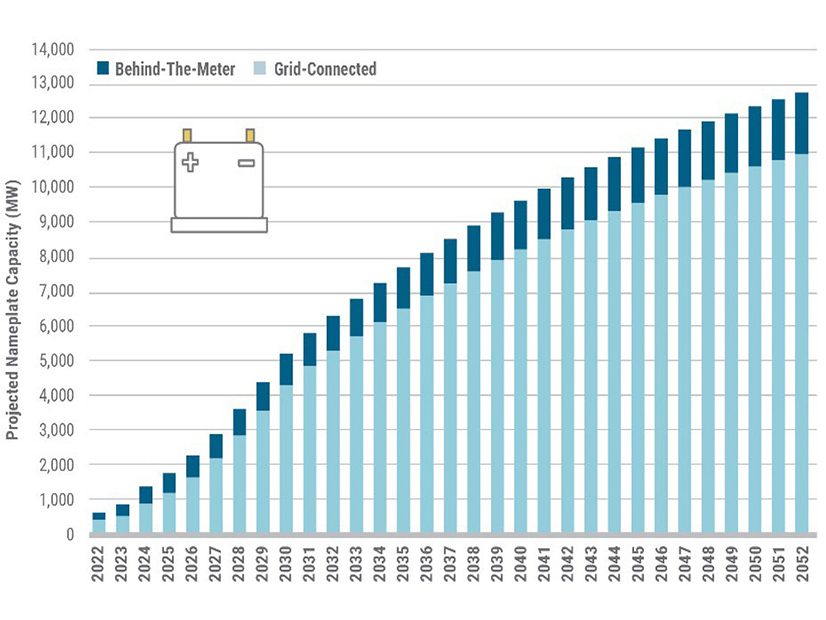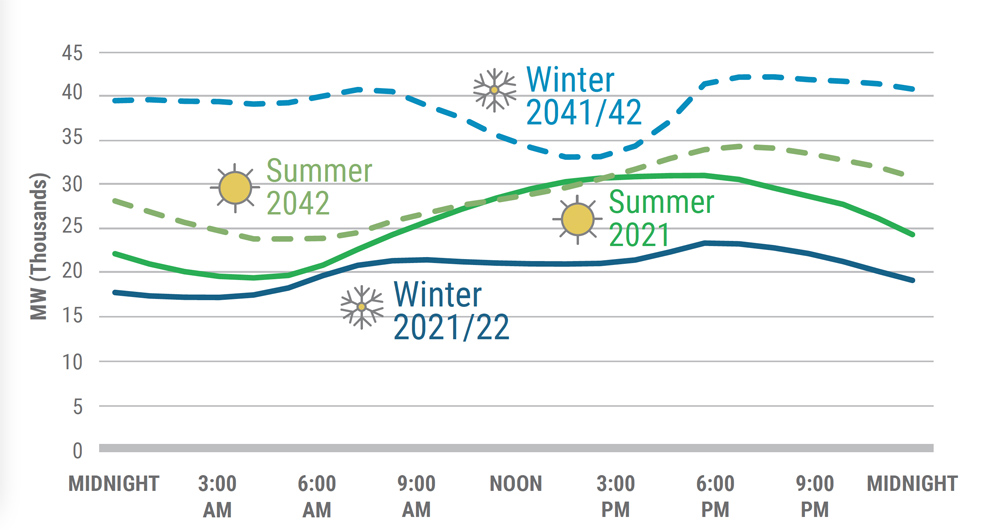
NYISO continues to adapt its wholesale electricity markets and grid planning processes to accommodate a wave of widely distributed renewable resources more dependent on weather than traditional generation, according to the ISO’s annual Power Trends report issued Wednesday.
“The introduction of a lot of new resources and the planned exit of some high-emitting resources that we’ve relied on for quite some time has resulted in an increasingly dynamic, decentralized grid, which means it’s much more complicated to be able to manage and predict how the core functions are going to be satisfied,” CEO Rich Dewey said in a press briefing. “A lot of our focus is making sure that we’ve got the tools and capabilities to maintain the necessary level of reliability as we move through that transition.”
Reliability margins are shrinking as generators needed for reliability are planning to retire, and electrification of space heating will likely flip the peak load from summer to winter in the mid-2030s, according to the report, subtitled “The Path to a Reliable, Greener Grid for New York.” Meanwhile, delays in building new supply and transmission, higher-than-expected demand, and extreme weather could threaten reliability and resilience in the future, the report said.
 2021 New York Control Area (NYCA) Bulk Electric System 2021 Actual and 2042 Forecasted Winter/Summer Load Shapes | NYISO
2021 New York Control Area (NYCA) Bulk Electric System 2021 Actual and 2042 Forecasted Winter/Summer Load Shapes | NYISO
A successful transition of the electric system requires replacing the reliability attributes of existing fossil fuel generation with clean resources with similar capabilities, the report said. New transmission is being built, but more investment is necessary to support the delivery of offshore wind energy and to connect new resources upstate to downstate load centers where demand is greatest.
“We at NYISO have been firm advocates for the need for new transmission for several years now, and we’re happy to report that that New York state, not only the New York ISO, but also some of our state partners — the Public Service Commission and the New York Power Authority — are making meaningful progress in the development of new transmission that will be critically important to help move power from the upstate region,” Dewey said.
New York’s Climate Leadership and Community Protection Act (CLCPA) requires that 70% of the state’s energy come from renewable resources by 2030 and that its grid be 100% net-zero emissions by 2040.
FERC in May approved three changes to NYISO’s capacity market that were spurred by the CLCPA, such as excluding new policy-driven resources from its buyer-side market power mitigation (BSM) rules, which will eliminate offer floors for wind, solar, storage, hydroelectric, geothermal, fuel cells that do not use fossil fuel, demand response and other qualifying resources under the law. (See FERC OKs NYISO Capacity Market Changes Stemming from NY Climate Law.)
Hourly load profiles are also changing because of the growing impacts of behind-the-meter solar, EV charging, climate change and post-COVID-19 shifts in the occupancy rates of homes and businesses, the report said.
The ISO’s announcement for the report also includes a datasheet of key takeaways.

